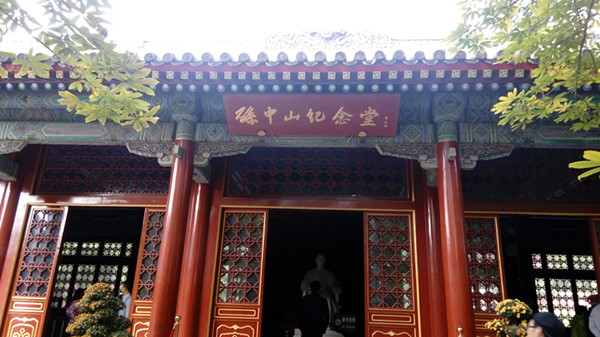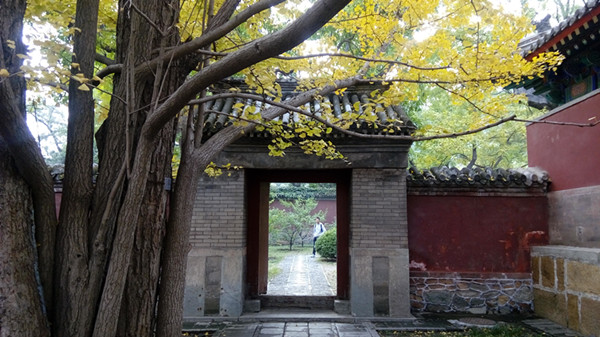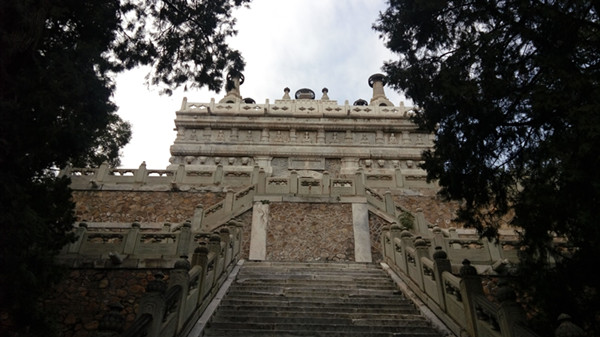Biyun Temple is an ancient temple located inside today’s Fragrant Hills Park, constructed in 1331 during China’s Yuan Dynasty and overhauled in Emperor Qianlong’s reign during China’s Qing Dynasty. In 1925 after the collapse of the Qing Dynasty, Mr. Sun Yat-sen passed away and his body was once placed in the temple for a while. Now it is open to the public and its scenery excels the imagination about a temple you can think of.

Memorial Hall of Mr. Sun Yat-sen
Buying a coupon (15 yuan including the ticket to the inside of the Fragrant Hills) or buying a 10 yuan ticket, you can take a stroll into the temple concealed from the mortal world.
On ordinary days it is indeed serene. You don’t have to wait a long time to buy a ticket to enter it, but you only need to go to the sales window and buy one, in a minute. The road to the temple is narrow lined with cypress trees on either of its sides. As you walk past the ticket-checking booth, you will step on a stone bridge which looks as old as you can imagine. Beneath the bridge is a small stream, which gurgles like a happy child all the time.
But you are not coming for the brook but for the serenity and beauty of the autumn.

After passing through one small hall where two Chinese gods’ statues stand, you will enter a small open space, where there are a pair of gingko trees located on either of its sides and of cypress trees looking down upon each and every visitor. It sounds funny, right? No, it is serious.
If you visit this space in late autumn, you will be rewarded, probably by the pair of tower gingko trees. Either of them has a height of 20 meters or more, their branches and twigs overlapping stretching to all directions. What these trees want to show you is nothing but their golden color. In a sunny day when sunshine caresses its with its light and warmth, its tender golden color unfold and is ready to dazzle your eyes and lens. In the south there is a small opened door, and standing beside it is one of the golden gingko trees. Some of its branches arch over the door. If you stand a few meters away to view it, it’s like a door of the past in grace.

Yet, these trees are not the overall beauty of the temple. As you walk deeper into its halls and past its narrow paths, you will become impressed by its intricate but elegant design and the unbeatable artist sculpturing method. In the temple you will see statues of the Lord Buddha, Guanyin, the 18th arhats and an arhat hall where hundreds of arhats’ statues are placed.

Finally, when you come to the end of your journey, you will see the Vajrasana Pagoda, located on a very high stone cushion. Looking up at it, you will feel its grandeur and solemnity. During your time traveling in the temple, you may feel a bit cool or cold. That’s what I felt. It is not that bad but seems to be so good, for you really feel like entering a world hidden from the mortal world when the cool or cold air blends with the serene atmosphere of the temple. This is quite special!



